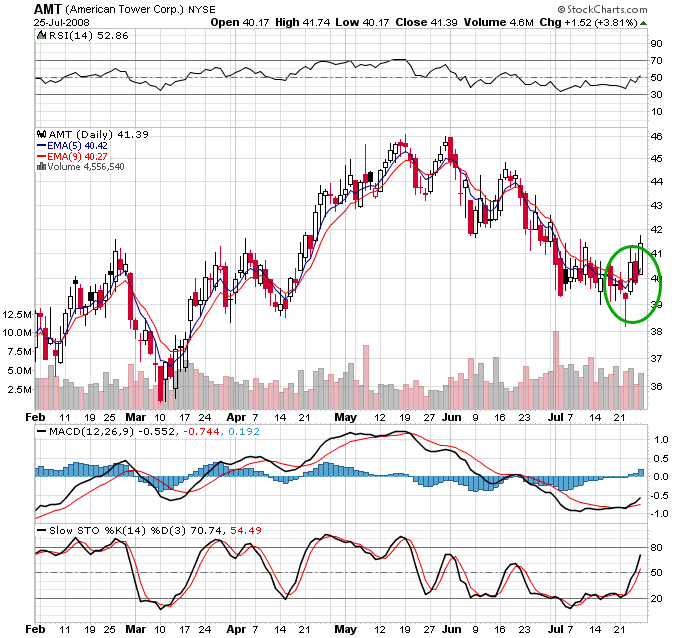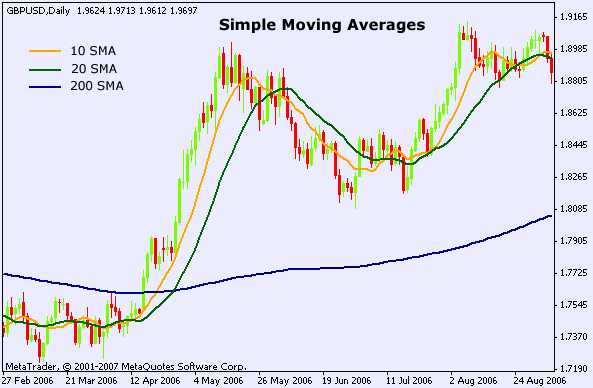Moving Averages Simple and Exponential
Post on: 16 Март, 2015 No Comment

Moving averages takes a period of time and calculates the average price over that time period to generate a trend indicator. They do not predict price direction but rather the current direction with a lag. The lag is based on past price. Despite this lag, moving averages smooth price and removes noise. Moving averages are the building blocks other technical indicators like Bollinger Bands. MACD and the McClellan Oscillator. The two most popular types of moving averages are the Simple Moving Average (SMA) and the Exponential Moving Average (EMA) .
Heres a chart with both an SMA and an EMA on it:
Simple Moving Average Calculation
A simple moving average is formed by adding the price of a security over a specific number of periods and then dividing by the number of periods (like an average price). Moving averages are based on closing prices. For example, a 10 day moving average is the 10 day sum of closing prices divided by 10. As its name implies, a moving average is an average that moves. Below is an example of a 5-day moving average evolving over three days.
The first day of the moving average simply covers the last five days. The second day of the moving average drops the first data point (11) and adds the new data point (16). The third day of the moving average continues by dropping the first data point (12) and adding the new data point (17). In the example above, prices gradually increase from 11 to 17 over a total of seven days.
Exponential Moving Average Calculation
Exponential moving averages reduce the lag by applying more value to recent prices. The weighted value depends on the number of days in the period. There are three steps to calculating an exponential moving average.
- Calculate the moving average.
- Calculate the weighting multiplier
- Calculate the exponential moving average. The formula below is for a 10-day EMA.

SMA: 10 period sum / 10
Multiplier: (2 / (Time periods + 1) ) = (2 / (10 + 1) ) = 0.1818 (18.18%)
EMA:
From the formula, we can see that a 10 period EMA uses an 18.18% weighting to the most recent price. A 10 period EMA can also be called an 18.18% EMA. A 20 period EMA applies a 9.52% weighing to the most recent price (2/(20+1) = .0952). The weighting for the shorter time period is more than the weighting for the longer time period. The weighting drops in half every time the moving average period doubles.
Below is a spreadsheet example of a 10-day simple moving average and a 10-day exponential moving average for Intel.
Click Here to see all Advanced Stock Trading Articles














